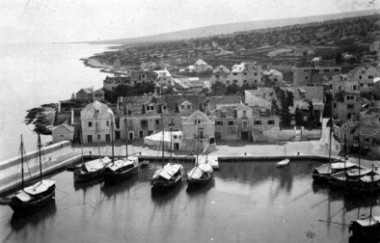

HISTORY
Over VILLA RUSTICA, Old Christianity to Preromanism - Sutivan absorb strength for future from deep roots, which stretch out from early Roman economy, so that they would expend in VI century on foundation old Christian church, and in XV century developed in fortified colony "CASTRUM" - and to this very day it keep`s the form of the place formed on place of early life and great culture. The name Sutivan is official name precede from the old Christian name of basilica "Sanctums Johannes", althea the locals and other islanders call him Stivan, and in that form his name is written down in many different historical papers. From 250 inhabitants in early XVIII century to 1875 inhabitants at 1890. Today Sutivan count around 700 inhabitants. To decreasing has come, like in whole Dalmatian, after the wine clause, and the wine disease -Peronospora and rooteater- which devastate the economy of island Brac. In 1893. Sutivan had produced over 9300 hectoliter of wine and 3500 hectoliter of oil, which is a 1/4 of entirely manufacture of island Brac. |
Between 1880. and 1900. the people of
Sutivan were move out, mostly in Chile, SAD, Argentina and Bolivia.
 |
 |
Quotation from "Police book of rules about public peace in county district Sutivan" from 1904: "...it is forbidden to make a loud noise, shouting in any time of day, especially at night, on streets, alehouse, inns, coffeehouse and every other public places, either singing is not allow at night after 10pm..."
To main land it`s only 13000 meters (port Split) from early time there was a strong connection between Sutivan and Split, since emperor Diocletian`s time to today`s time, and for a example is a beautiful summerhouse by Croatian writer Jerolim Kavanjina, (which was recently in accident burn down) with baroque gardens, in Croatian literature "WEALTH & INDIGENCE" with 32658 verses in 30 composite poetry. |
MONUMENTS OF CULTURE
 |
The church of St.John on foundation
of old Christian basilica from VI century
The complex of houses "ILIC" from 1505. The parish church assumption Mary from 1579. The catacombs on new cemetery from 1634. The church of St.Roko from 1635. The Kavanjinov summerhouse from 1690. The castle "Marijanovica" from XVII century. |